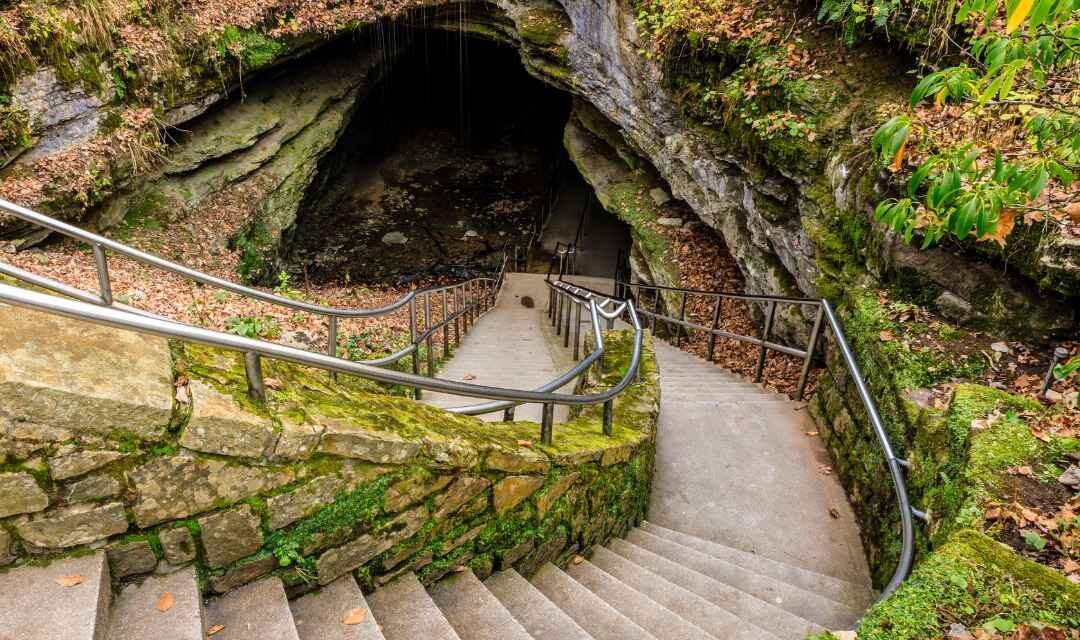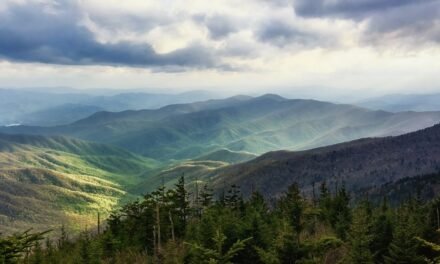Discover the wonders of Mammoth Cave National Park, a UNESCO World Heritage Site and the world’s longest known cave system. With over 400 miles of explored passageways, stunning geological formations, and a rich cultural history, Mammoth Cave offers a unique experience for nature enthusiasts, history buffs, and adventure seekers alike. This comprehensive guide will help you navigate the park’s attractions and make the most of your visit.
Mammoth Cave National Park Location
Mammoth Cave National Park is located in south-central Kentucky, encompassing parts of Edmonson, Hart, and Barren counties. The park is approximately 90 miles south of Louisville, Kentucky, and 90 miles north of Nashville, Tennessee, making it easily accessible from major cities in the region.
Mammoth Cave National Park Things to Do
From exploring the cave’s vast underground labyrinth to hiking and wildlife watching, Mammoth Cave National Park offers a variety of activities for all ages and interests.
Cave Tours
The highlight of any visit to Mammoth Cave National Park is undoubtedly a guided tour of the cave system itself. The park offers a range of tour options, varying in difficulty and duration. Some popular tours include the Historic Tour, which delves into the cave’s rich human history; the Frozen Niagara Tour, showcasing the park’s stunning cave formations; and the Wild Cave Tour, a thrilling off-trail adventure for experienced cavers. Advance reservations are highly recommended, especially during peak season.
Hiking and Biking
With more than 80 miles of trails, the park offers excellent opportunities for hiking and biking. Trails vary in length and difficulty, from the easy, half-mile Discovery Trail to the more challenging 10-mile Mammoth Cave Railroad Bike and Hike Trail. While exploring the park’s surface, keep an eye out for the abundant wildlife, including deer, wild turkey, and numerous bird species.
Canoeing and Kayaking
The Green and Nolin Rivers meander through Mammoth Cave National Park, providing opportunities for canoeing, kayaking, and fishing. Canoe and kayak rentals are available from nearby outfitters, and guided river trips can be arranged for those looking for a more structured experience.
Junior Ranger Program
Children can participate in the park’s Junior Ranger Program, which offers educational activities and opportunities to learn about the park’s history, wildlife, and conservation efforts. Upon completion of the program, participants earn a Junior Ranger badge and certificate.
Mammoth Cave National Park Itineraries
Whether you have a day or a week to explore Mammoth Cave National Park, the following itineraries will help you make the most of your visit:
One-Day Itinerary
Morning: Begin your day with a guided cave tour, such as the Historic Tour or the Frozen Niagara Tour. Be sure to arrive early, as tours can fill up quickly.
Afternoon: Enjoy a leisurely lunch at the park’s visitor center, then spend the afternoon hiking or biking on one of the park’s scenic trails.
Evening: Take in a ranger-led evening program or campfire talk, then unwind by the campfire at your campsite or relax at your lodging.
Three-Day Itinerary
Day 1: Follow the one-day itinerary, including a cave tour, hiking or biking, and an evening ranger program.
Day 2: Embark on a full-day guided river trip on the Green River, taking in the park’s lush landscape and spotting wildlife along the way. Alternatively, rent a canoe or kayak and explore the river at your own pace.
Day 3: Take another cave tour, such as the Domes and Dripstones Tour or the Grand Avenue Tour, to experience a different aspect of the cave system. In the afternoon, visit the park’s museum to learn more about the area’s geology, history, and wildlife.
One-Week Itinerary
Days 1-3: Follow the three-day itinerary, taking multiple cave tours, hiking, biking, and exploring the Green River.
Days 4-5: Venture beyond the park’s boundaries to explore the surrounding region, including nearby attractions like the Abraham Lincoln Birthplace National Historical Park, Nolin Lake State Park, and the Kentucky Down Under Adventure Zoo.
Days 6-7: Return to Mammoth Cave National Park for a Wild Cave Tour, an unforgettable off-trail caving experience. Spend your final day relaxing at your campsite or lodging, reflecting on your adventures in this remarkable national park.
Best Season to Visit Mammoth Cave National Park
While Mammoth Cave National Park is open year-round, the best time to visit is during the spring and fall months, when temperatures are mild and the park is less crowded. Summer is the busiest season, with increased visitation and limited availability for cave tours and lodging. Winter can be a quieter time to visit, but some facilities may have reduced hours, and some cave tours may not be offered.
Mammoth Cave National Park Weather
The weather in Mammoth Cave National Park is characterized by four distinct seasons, with mild to hot summers and cool to cold winters. Summer temperatures typically range from the mid-60s to upper 80s (°F), while winter temperatures can dip into the low 20s to mid-40s (°F). The park receives moderate rainfall throughout the year, with spring and fall being the wettest seasons. Always check the weather forecast before your visit and be prepared for changing conditions.
Mammoth Cave National Park Hotels and Camping
Visitors to Mammoth Cave National Park have several lodging and camping options:
The Lodge at Mammoth Cave
This historic lodge offers a range of accommodations, from hotel rooms to private cabins. The lodge is conveniently located near the park’s visitor center and cave tours.
Campgrounds
The park has three campgrounds: Mammoth Cave Campground, Houchin Ferry Campground, and Maple Springs Group Campground. Campsites are available on a first-come, first-served basis, except for Maple Springs, which requires reservations for group camping. All campgrounds have restrooms, picnic tables, and fire rings.
Backcountry Camping
For those seeking a more rustic experience, backcountry camping is available with a free permit from the visitor center. Be aware that backcountry camping requires hiking to your campsite and following Leave No Trace principles.
Mammoth Cave National Park Restaurants
The Green River Grill, located in the visitor center, offers a casual dining experience with a variety of menu options, including sandwiches, salads, and regional specialties. The park also has several picnic areas, perfect for enjoying a packed lunch or a meal prepared at your campsite.
Mammoth Cave National Park Wildlife and Plants
Mammoth Cave National Park is home to a diverse array of wildlife and plant species that thrive both above and below ground. The park’s forests, rivers, and cave ecosystems provide unique habitats for various flora and fauna.
Wildlife
Visitors may encounter white-tailed deer, wild turkey, and numerous bird species, including the pileated woodpecker, eastern bluebird, and red-tailed hawk. The park is also home to smaller mammals, such as raccoons, gray squirrels, and eastern chipmunks. The cave system supports several cave-dwelling species, including the endangered Indiana bat and the eyeless cave shrimp.
Plants
The park’s forests consist primarily of oak, hickory, and maple trees, as well as flowering dogwood and redbud trees that add vibrant splashes of color in the spring. The forest floor is covered with a diverse array of ferns, wildflowers, and fungi, creating a lush and picturesque landscape for visitors to explore.
Mammoth Cave National Park History
Mammoth Cave National Park has a rich cultural history dating back thousands of years. The cave system has served as a shelter, a source of minerals, and a site of spiritual significance for various cultures throughout time.
Archaeological evidence indicates that Native American peoples inhabited the region as early as 6,000 years ago. They used the cave for mining minerals, such as gypsum and mirabilite, which were used for ceremonial purposes. Artifacts discovered within the cave, including pottery, tools, and torches, provide insights into the lives of these early inhabitants.
European settlers began exploring the cave in the late 18th century, and by the early 19th century, Mammoth Cave had become a prominent tourist destination. The cave was also used for saltpeter mining during the War of 1812. In the mid-1800s, enslaved African Americans, including the famous guide Stephen Bishop, played a significant role in mapping and guiding tours within the cave.
Efforts to protect and preserve the cave system led to the establishment of Mammoth Cave National Park in 1941. The park was later designated as a UNESCO World Heritage Site in 1981 and an International Biosphere Reserve in 1990.
Mammoth Cave National Park Geology
The geological story of Mammoth Cave National Park spans millions of years, shaped by the forces of water and time. The cave system is primarily composed of limestone, a sedimentary rock formed from the remains of ancient marine organisms.
Over time, acidic groundwater slowly dissolved the limestone, creating the vast network of passages and chambers that make up Mammoth Cave. The park’s unique geological formations, such as stalactites, stalagmites, flowstones, and gypsum flowers, were formed through the deposition of dissolved minerals over thousands of years.
The geology of Mammoth Cave National Park is not only a testament to the power of natural processes, but also a valuable resource for scientific research and education.
Conclusion
Mammoth Cave National Park offers an unforgettable experience for visitors seeking adventure, natural beauty, and a glimpse into the past. With its awe-inspiring cave system, diverse wildlife, and rich cultural history, the park truly has something for everyone. Use this comprehensive guide to help you plan your visit and create lasting memories in this remarkable national treasure.





